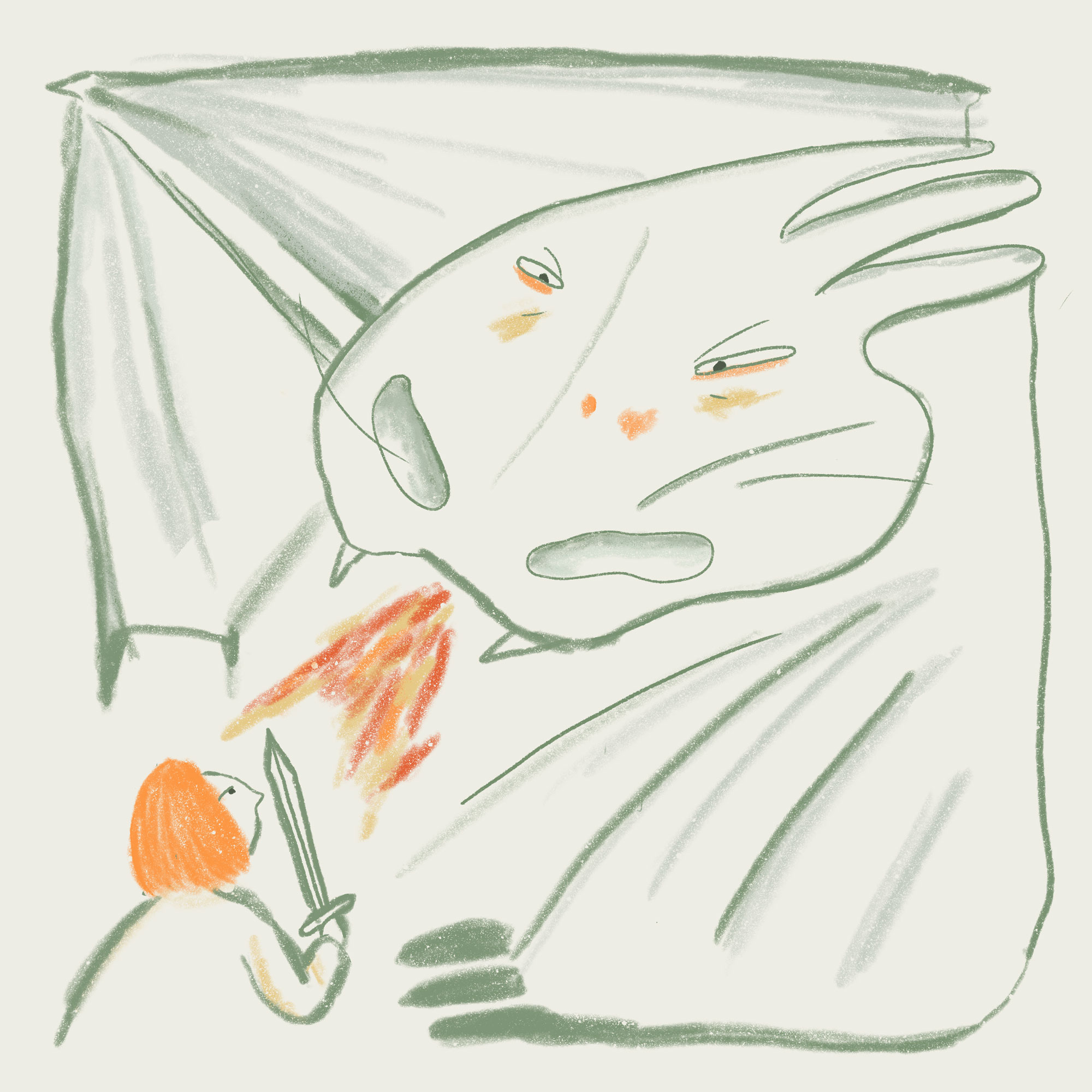So.
How many of you read Beowulf in high school? How many of you did not see that question coming?
Here’s the highlight reel: King Hrothgar of Denmark presides over a prosperous and successful kingdom. He has erected a great hall called Heorot where he and his warriors congregate at night and drink mead and that sort of thing. But Hrothgar’s success angers a certain fierce and very hungry monster named Grendel who lives in a nearby swamp. Every night for 12 years he comes to Heorot, grabs a few of the King’s warriors, and takes them home to his cave for dinner. As dinner. Never mind the question of how there are enough warriors to last for 4,000+ meals—these were mythic times. Anyway, the Danes endure years of violence at his hands, and they’re terrified.
But a strapping young lad named Beowulf hears of these troubles and arrives with a small band of “free lancers” (original definition) and offers to vanquish the monster. In other words, Beowulf is a problem-seeker. Hrothgar clears out, leaving Beowulf and his band to defend Heorot. Sure enough, Grendel shows up. There’s a battle. The monster is mortally wounded. Hrothgar is thrilled. Everybody loves Beowulf.
And he is rewarded with—you guessed it—a massive bonus.
But then…
The next night, something worse comes out of the swamp. It’s Grendel’s mother, and she’s pissed. She’s the original Swamp Thing, and she’s quite the handful. Beowulf chases the monster down to the caves at the bottom of the lake and kills her. Hrothgar is thrilled. Everybody loves Beowulf.
But then…
Fifty years later a dragon comes calling.
And we’ll put a bookmark in the story there for the time being.
There is always another dragon
Dragons can take the form of disruptive technologies, unforseen products, or competitors with unanticipated strategic advantages. And now we know dragons also manifest as an old-fashioned, non-digital, and lethal virus.
A year ago when I was invited to New Zealand, nobody was talking about coronaviruses. Less than four months ago it was a blip on the news about an outbreak far away in Wuhan, China. Now it’s always headline news, if not the only news, with cases of COVID-19 confirmed in over 100 countries. (As of April 22 it has been confirmed in 210 countries and territories with a total of 2,557,181 confirmed cases and death toll of 177,641.). A bonafide global disaster.
By now we have all become amateur epidemiologists. We know that COVID-19 is a new, contagious, infectious disease for which there is no vaccine or cure. We don’t know exactly how or why it got into the human population. We know that about 80% of those infected either have what appears to be a run-of-the-mill cold or show no symptoms at all. We know that 14% of cases are classified as “serious” and 5% as “critical.” We know it can be deadly. We know that it’s been circulating for months. We know that testing, especially in the U.S., is far behind the curve in terms of containment; that stock markets around the world are in meltdown; that no one knows how or when this will end.
So why did I travel halfway around the world before the start of all this to talk with you? Because I believe that designers, like Beowulf, are not problem-solvers. We must be problem-seekers.
Designers are not problem-solvers.
We are problem-seekers.
What do I mean by that? Designers are trained to ask the next question, and the question after that. When you ask the next question, and the next question, and the next question, you begin to see a pattern. A bigger picture begins to emerge from behind the pixels.
To stick with COVID-19 for a moment—it is actually part of a much larger, environmental story. (And I now know—first-hand—just how dear the environment is to you here in New Zealand.)
Over the last 30 or 40 years, there has been an acceleration in the number of weird, contagious and deadly disease outbreaks: SARS, West Nile, and Zika, to name a few. It turns out there’s also been an uptick in wildlife, livestock, and plant diseases, too, all of which have been amplified by environmental degradation.
This means that at the very same time that we need to figure out how to navigate this still-unfolding virus crisis, we need to begin to strategize how we’re going to deal with the next dragon.
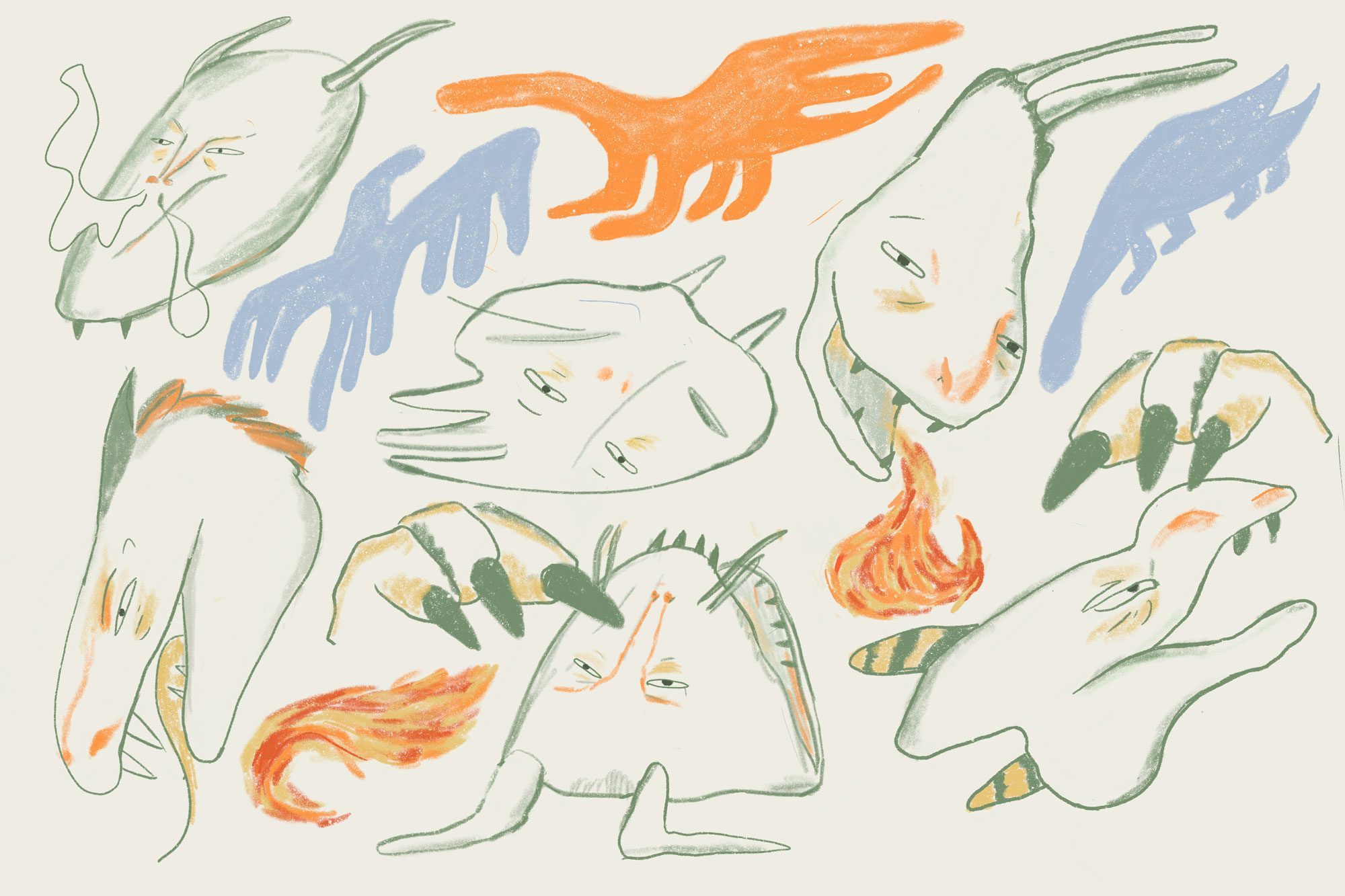
What would Beowulf do?
Designers imagine new futures. Plural. We look to the past to see what similar problems have beset us before and how other people have solved them. We use that as inspiration.
From the recent, annihilating bushfires and coral bleachings (both linked to climate change) to these increasingly frequent disease outbreaks, the planet is telling us in no uncertain terms that business as usual is no longer an option. We can now all see what that future looks like.
We also have to ask, how should we let our governments and policies return to business as usual? So many fallacies about how things should operate—punishing rules, fines, shutoffs, evictions—have been exposed as fallacies in this crisis that we’ll have to examine why they were there in the first place.
So how can design—and designers—help us imagine a better world?
A CHANGED WORLD
“The pace of change is accelerating.”
How many times have you heard that trope? It has now been thoroughly drilled into generations of MBAs—a corollary to Moore’s Law: As microchips get smaller, cheaper, and faster, so does the world that they have enabled. Competition is about speed. Innovation is about speed. Winning is about speed.
Yet the pace of change has remained exactly the same. Studies have shown that as soon as a new, disruptive technology—or idea—has just 2% or 3% of market share, the status quo is poised to flip. There are all kinds of reasons for this—including that investors are always most dazzled by the potential for growth. Money flows into the start-ups that, unencumbered by legacy costs, are positioned to zoom ahead. Their market share quickly doubles, more investors want in, and soon the outlier is the incumbent.
It took about 10 years for Henry Ford’s horseless carriages to outnumber horse-drawn carts in New York City. It took about the same amount of time for Apple to sell its first billion iPhones. Whether it’s Edison’s incandescent light bulbs versus LEDs, or coal-powered central power plants versus solar roofs, or heavy fur-lined “storm coats” versus lightweight polar fleece, the basic story is the same.
As soon as a critical mass sees an idea as a better idea, everybody wants in.
So if the rules governing the pace of change have remained constant, what has changed?
It is the sheer number and variety of changes happening at the same time. And these also have knock-on, rippling impacts. The shift from taxi cabs to ride-sharing changed everything from traffic patterns to municipal revenue streams. The rise in gig economy workers provided new sources of income for independent contractors, but also a big increase in the number of workers without employee health benefits. During a public health crisis, that puts us all at increased risk.
Nothing happens in isolation. Yet for the last 50 years, business has been guided by a parade of “centric” approaches that elevated the experience of the user—the “consumer”—as the metric that mattered most. Consumer-centric, user-centric, human-centric. And, let’s be honest, designers have enabled this type of thinking.
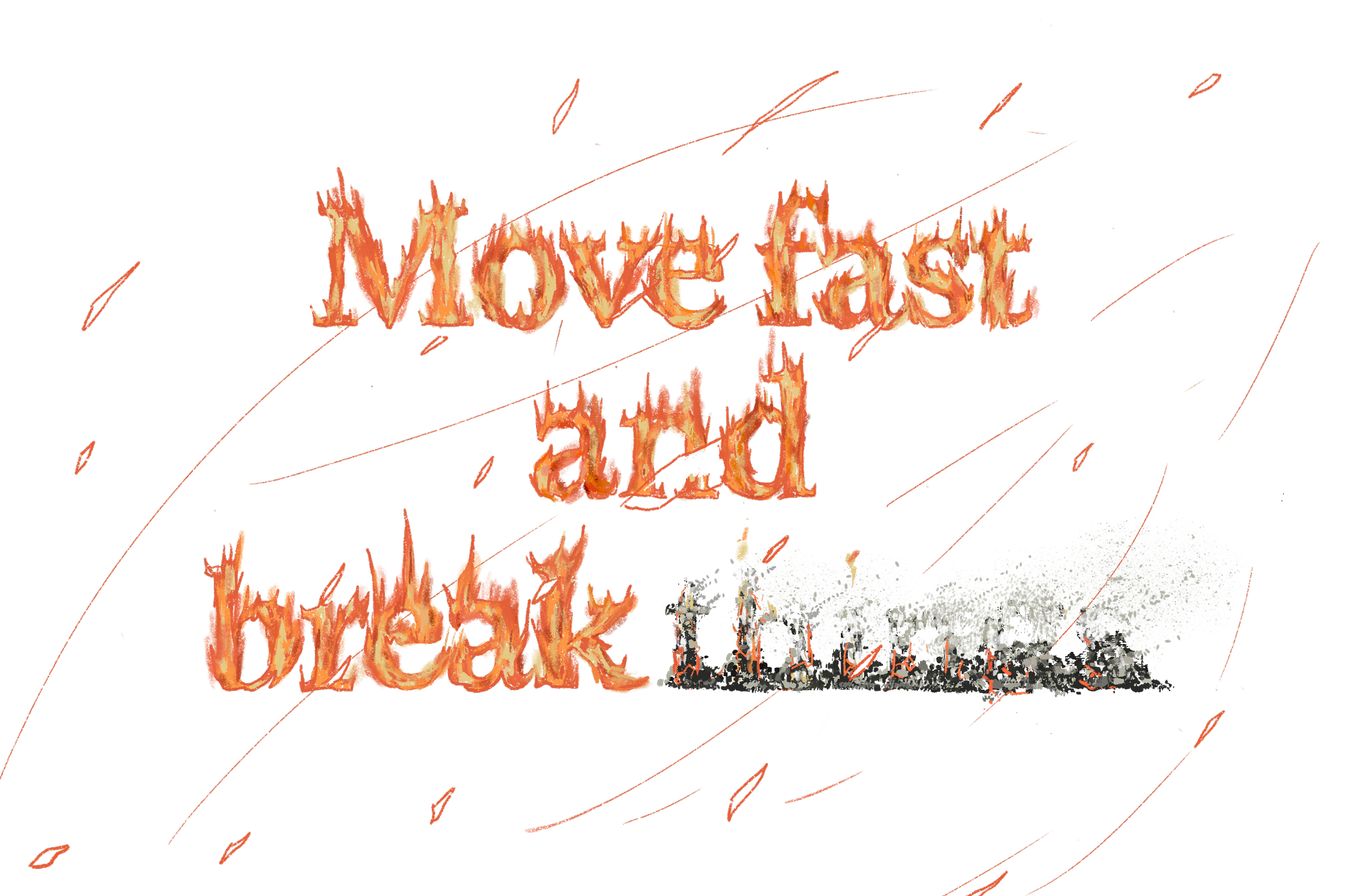
Entrepreneurs were taught to look for inspiration in customer “pain points” and innovate accordingly. Much was gained from this approach. Not only is there an app for just about anything you can imagine, but all kinds of goods and services that only a few years ago you couldn’t: AirBnB, Uber, crowdfunding, and many more.
We not only embraced but exalted the idea of failure, which is an interesting concept. If by “failure” we mean experimenting, learning from mistakes, and improving, it’s fantastic. But that improvement component is essential. Failure in itself isn’t evidence of future greatness or lasting value. I understand the appeal of a call to “move fast and break things.” The spark of creativity is in daring and the willingness to question and overturn old assumptions. But only the spark. Words matter. And if we take a snappy motto as license for irresponsibility and destruction, we will surely reap the whirlwind. Breaking things isn’t enough. Moving at breakneck speeds isn’t enough. Killing the dragon isn’t enough. We need to start thinking about foreseeing—and solving for—the consequences.
Our “centric” focus evolved to enable individuals to do more and do better. But the consequences are devolving into a sort of institutionalized hyper-selfishness. It’s leaving us with a throw-away culture where somebody else pays for the mess and a world where less than 1% of the population has more than almost all the rest combined. It is trapping future generations with a legacy of personal and environmental debt that they will never be able to repay, to lives that are crippled because of what we have done.
As the world shuts down and stock markets slide on the news of the COVID-19 pandemic and the heady air of “on-paper” hyped prosperity rushes out of an over-inflated economic balloon, we have a precious moment to see clearly.
The era of “Think different” took things as far as it could. Now we need to be brave enough to “Do different.”
Creativity and imagination are humanity’s defining features, but they can be—and often have been—used for bad (even evil) as well as for good. It is our origin story: the Garden of Eden where we have been given abundance but are always in danger of squandering it.
Our future on the Earth will be determined by the limits of our creativity and imagination, whether we can see the bounty of opportunities in pursuing the greater good or revert to a default selfishness. If we can only imagine business-as-usual, and if our vision is limited by the blinded linearity of ideas like “minimum viable product” thinking, our prospects are grim.
But if we begin to change the metrics, to broaden our perspectives to embrace the dynamism of complex biological and industrial systems, we have a chance. This means thinking about “all users” plural instead of “the user,” and about all the material chains as well as all the supply chains. It means going beyond sustainability and resilience (which are only the allies of the status quo) to thinking in terms of regeneration and renewal. So much damage has been done, especially in the last half-century, yet, remarkably, there is still much that can be repaired and restored.
Restoration requires a new paradigm anchored in a whole-systems, environmental perspective. Yes, environment writ large. We have only a few years left to stabilize the climate and keep all the fish in the oceans from turning into plastic. But also environment writ small: our work relationships, environment design, communications logistics, improved information flows, materials and manufacturing choices. You know, the stuff we do.
Designers are beyond essential to this transition. We are trained to look at how parts impact the whole and how systems nest within each other. We look for connections, context, and leverage. We always ask the next question, and the question after that, making it possible to see the familiar in a new way.
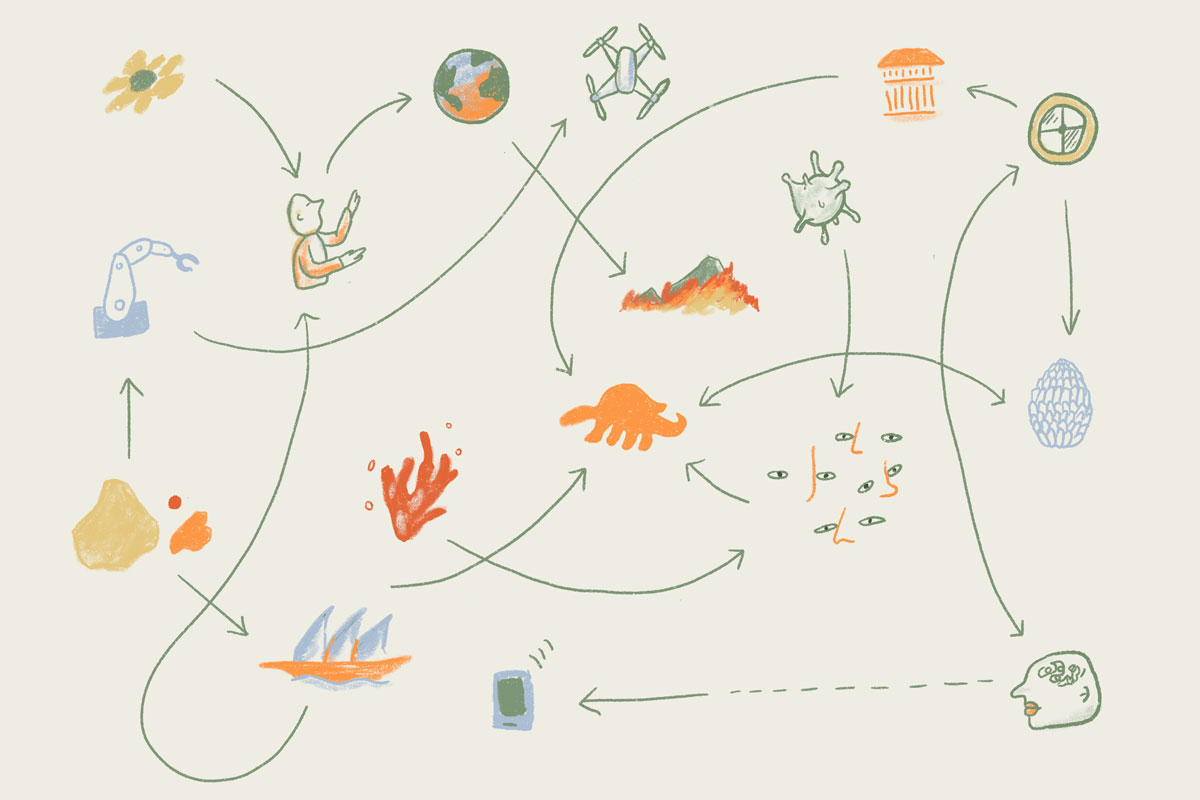
We always ask the next question, and the question after that, making it possible to see the familiar in a new way.
An environment-anchored design practice is expansive, clear-visioned, and fearless. It is also sensitive, detailed, and alert. Humanity isn’t apart from Nature, but a part of Nature. That subtle shift changes everything about the new futures we need to create.
It allows us to see dragons—and there will always be another—in a new context.
In Nature, symbiosis—a fancy term for cooperation—is at least as important as competition as a driver of evolution. In fact, they dovetail. “Survival of the fittest” refers to competition between collaborators rather than between individuals. Did you know, for example, there are 10 times as many microbial cells in a human than there are human cells? Astonishing. Without our microbiome, we would not exist.
Let’s go back to Beowulf (I know you’re dying to know how it ends).
Fifty years later, another monster comes. This time it’s a fearsome dragon and Beowulf goes out to meet him, but Beowulf is an old man now. Still, he manages to slay the dragon. Again, everybody loves Beowulf.
But Beowulf is also slain.
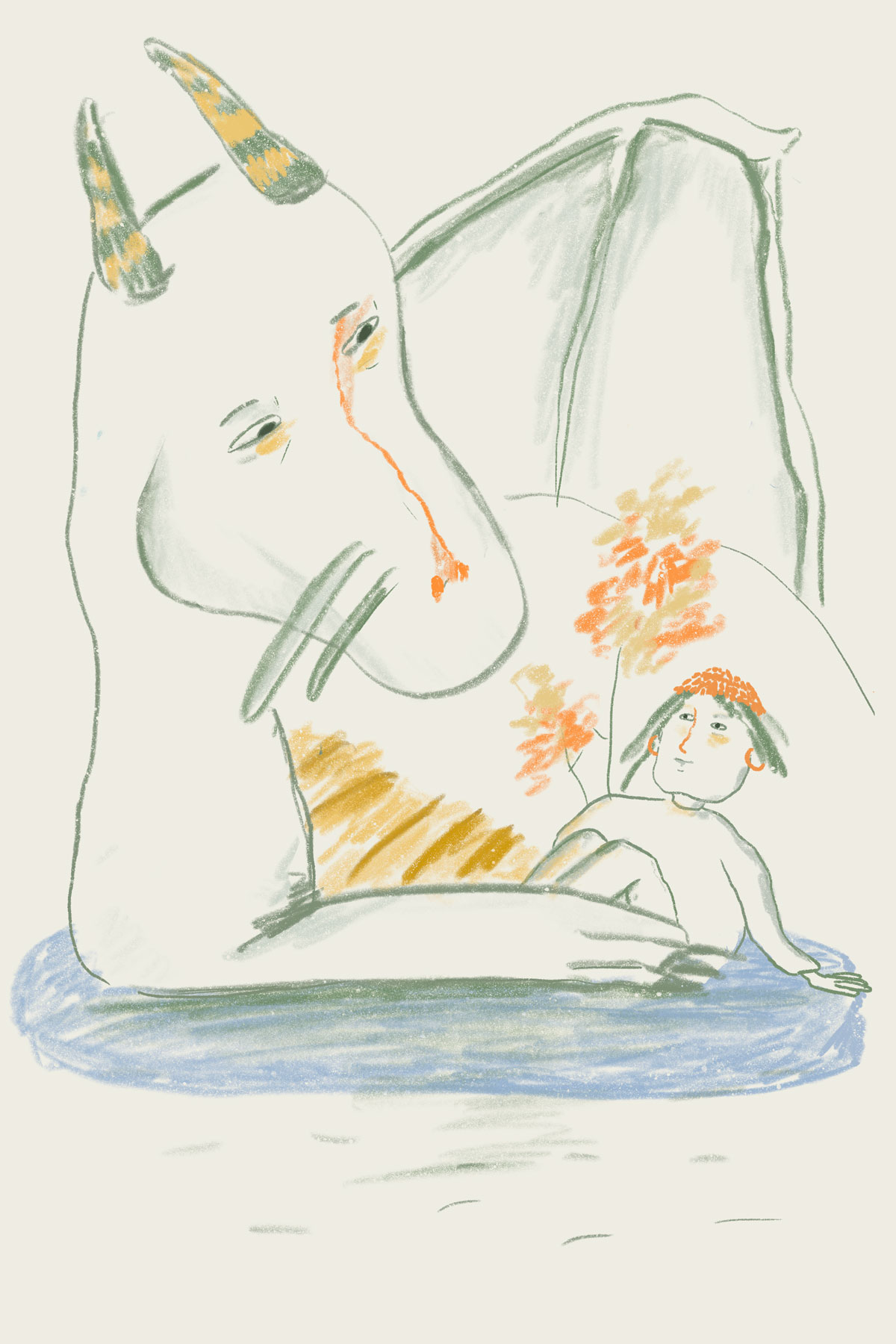
That ending is a message to us from across time. The virtues so admired by the Norse warriors (and modern business)—speed, power, breaking of norms—may have been exciting for a time, but ultimately they will not save us in our next chapter.
Perhaps the time has come to look for some alternative endings. Perhaps we don’t need to kill every dragon after all. Maybe, at times, we just need to have a nice chat with it. See what it’s asking for. It’s time to start designing for a world in which we recognize that we are all much more connected now—all of the time. Where the good of each one of us depends on the good of all of us, and especially of our planet.
It’s going to take a lot of creativity and imagination, but that’s what designers are best at. That’s what I’ve seen all week in Auckland.
Our past doesn’t have to be prologue.
We can learn from this.
We can see new patterns.
We can change.
The Māori design leaders who greeted me at the opening of my talk tonight? Their original culture and daily lives are so deeply connected to the families, communities, and rhythms of the world around us. We should listen to them.
Because we must not only find ways to help us think different, but do different, too.
Before the next dragon arrives.
Brian Collins is the Chief Creative Officer of COLLINS.
Artwork by Yeun Kim, COLLINS.
